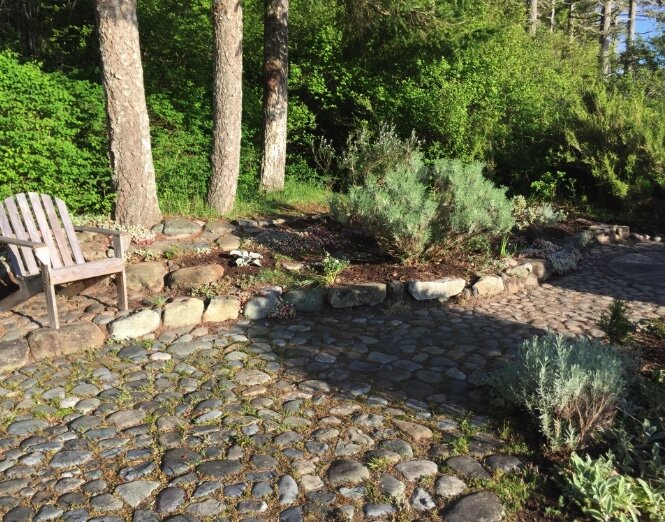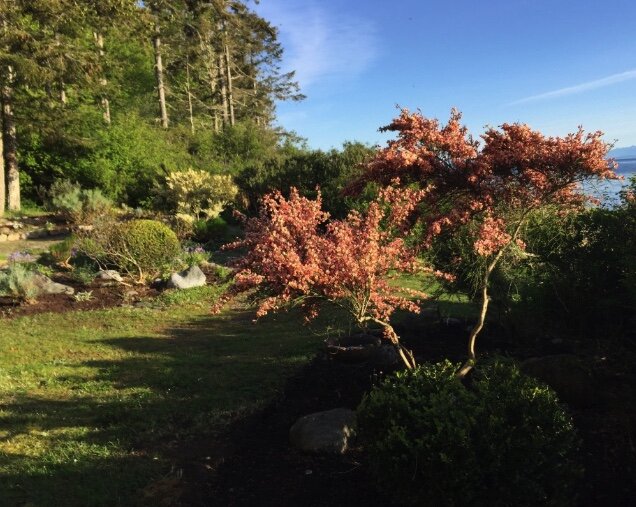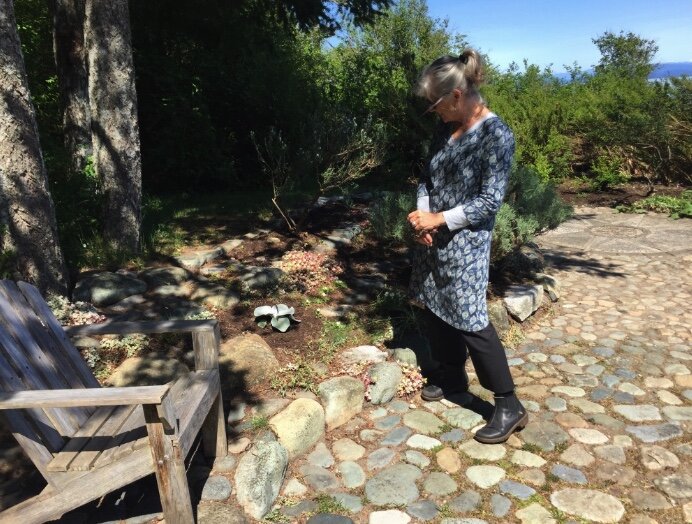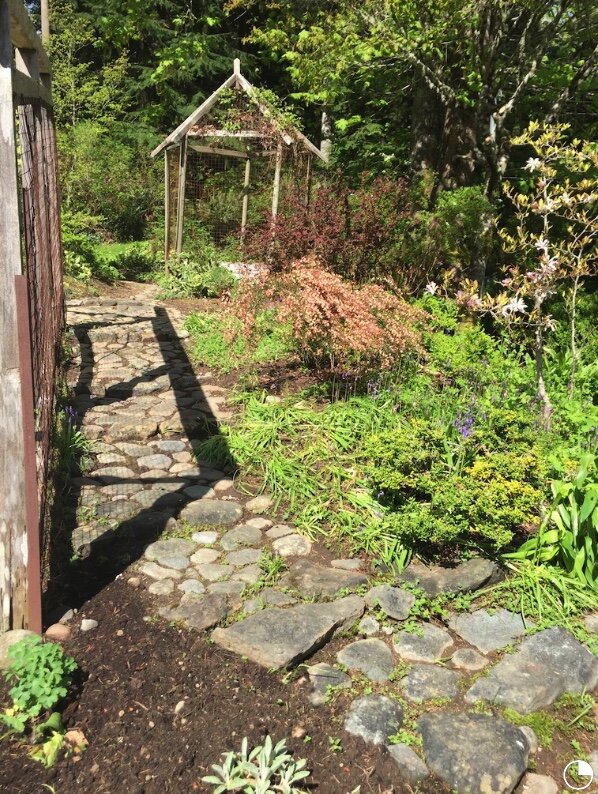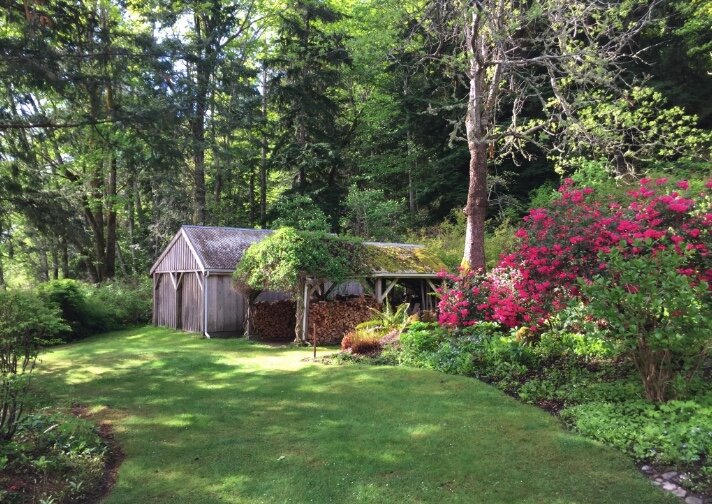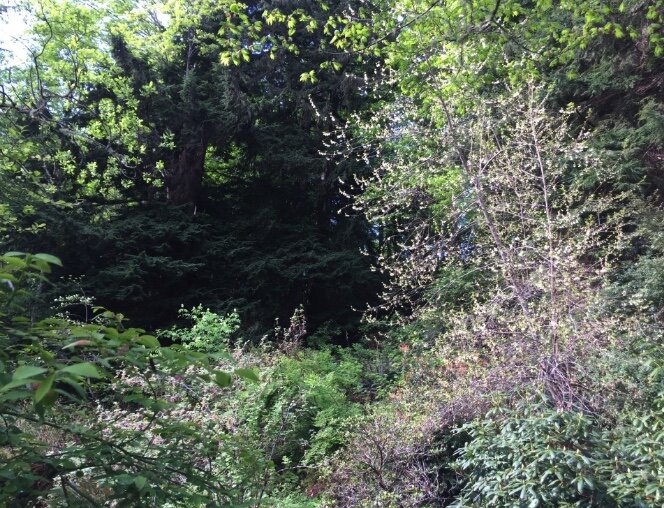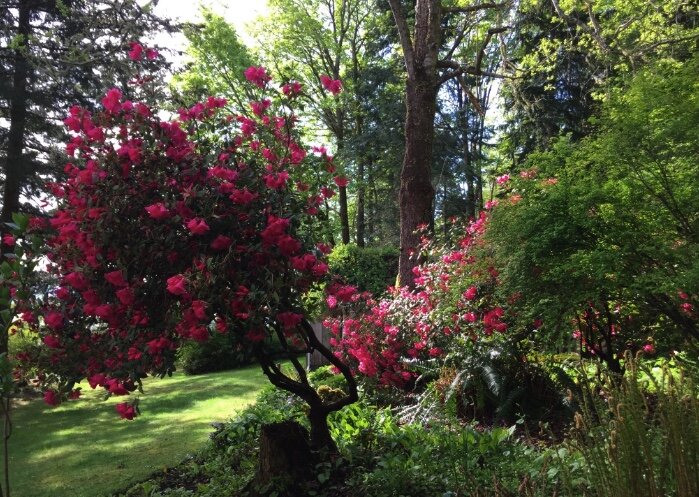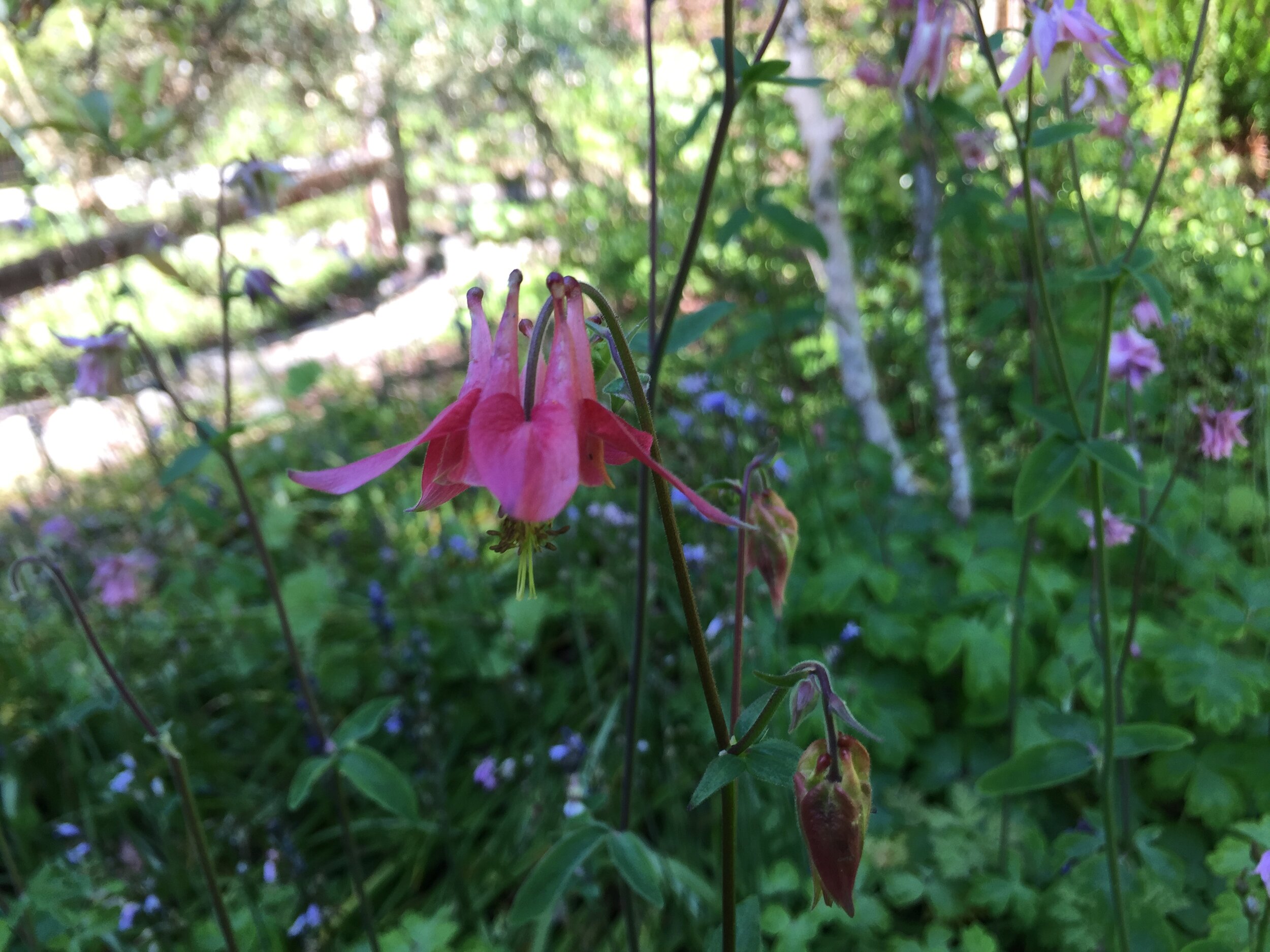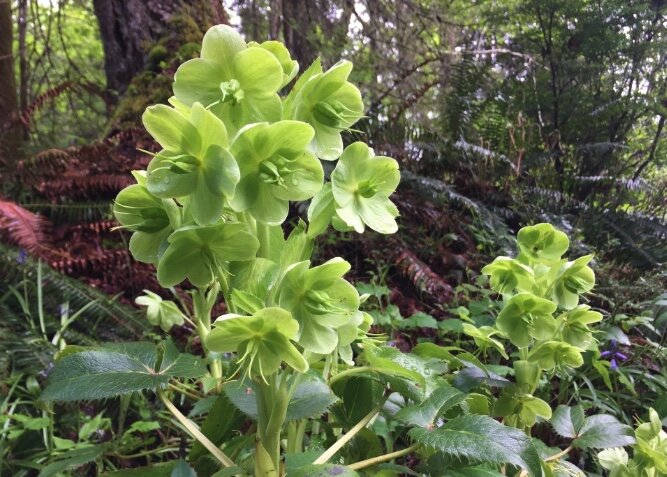A Year of Flowers!
by Glenn Gustafson
When we first moved to the Comox Valley from the prairies, a local gardener told us that you could plan your garden so that you have something blooming every month of the year. It seemed too fantastic to be true, but it is actually possible in our climate, especially if you’re located near the water. Not only is this something us garden lovers will enjoy, our year-round Anna’s Hummingbirds will appreciate this too.
By chance, it may be that your garden already does have a wide range of seasonal blooms, but for most of us this will take a little assessment and planning. Perhaps the best way to approach this is to do a ‘flower audit’ of your yard throughout the year, i.e. keep track of what is blooming and when. With this information in hand, you can look at how your garden blooms are spread out over the year and then, as space allows, start adding in some additional perennials or shrubs to target those times of the year that are lacking flowers.
Part of the fun is doing some research to see what will flower in our zone during the colder times of the year. While choices will be somewhat limited for the winter months, there are some great options worth considering, for example:
- November: Camellia sasanqua or Hardy Cyclamen (Cyclamen hederifolium)
- December: Winter-flowering Heather (Erica carnea/Erica darleyensis), Christmas Rose (Helleborus niger) or Pink Viburnum (Viburnam x bodnantense ‘Dawn’)
- January: Winter Daphne (Daphne odora), Witch hazel (Hamamelis) or Oregan Grape (Mahonia x media “Charity”)
- February: Primrose (Primula acaulis), Fragrant Sweetbox (Sarcococca ruscifolia), Crocus, Snowdrops (Galanthus), Species Tulips or Squill (Scilla siberica)
So why not take a close look at your garden this year to see what is blooming and then fill in the more empty months with some new plants to enjoy? The hummingbirds will thank you!
Garden Memories
Tea at Foxglove Farm
by Diana Caldwell, with contributions by Lauren Hay
Each spring, I still imagine my friend Sarah’s return from Vancouver to the Island to spend the summer at Foxglove Farm in Merville. She arrived with the hummingbirds and the blooms of the flowering currant, heralding a season of garden tours and visits over tea. As far back as 1995, these occasions were attended by my friend, Lauren Hay, and me, and occasionally our husbands, our mothers, or various mutual gardening friends…We looked forward to these small gatherings as some of summer’s most pleasant occasions.
Arriving a little early, we parked outside the old cedar gate at the top of the almost hidden driveway. From there, we continued on foot, taking the long grassy track down to the house on the beach. Along the way, we admired the verges, planted by Sarah with dogwood, flowering currant in red, pink, and white, fragrant osmanthus, spireas, mahonia “Charity,” daffodils and narcissus, assorted hellebore, primulas, and ferns - all mingling exuberantly with the wildlings on the edge of the forest. Beyond these, in the deep shade of the woods, the shifting afternoon light illuminated the mossy branches of the great conifers with stripes of acid yellow green.
Descending further, we passed the former site of a large hazelnut wood where Brian and Sarah raised a fine crop of filberts annually. As the McLoughlins aged, and after some bear damage to the nut trees, this area was returned to forest.
When we arrived down at the beach, Sarah and Brian would wave from the distance, and come striding in their rubber boots to meet us. Tea at Foxglove Farm was an informal affair - Sarah in a clean long-sleeved cotton shirt - or in cooler weather, a turtleneck and sweater, belted with khakis, her straw hat warding off the sun with a touch of glamour. Shrugging off the infirmities of age with strenuous ongoing work on their property, they appeared fairly strong, and agile until almost the end of their days in Merville.
Guests always arrived with small gifts in hand: fresh berries or preserves; a modest bouquet; a carefully chosen book; or one of the small alpine or rockery plants that Sarah loved.
We were invited to take our seats on the weather-beaten Adirondack chairs on the partially shaded deck - or in fall, to settle into the blue and white striped cushioned sofa and armchairs clustered around the fire in the cozy living room. From either vantage point, the view out across the garden to blue ocean and sky - to the faraway snow-capped coast range and beyond - was perfection!
Brian set a fine example to any male visitors by preparing and presiding over tea, thoughtfully refilling the porcelain teacups, and offering thinly sliced and buttered raisin bread or Chelsea buns, followed by Thrifty’s cookies….all delicious and elegantly simple. Brian used to expect guests, men in particular, to bring a joke or a story, and his delighted laughter when they obliged made everyone comfortable.
In the warm and welcoming atmosphere, conversation took off - lively and interesting - rolling happily through the afternoon - Sarah remembering details from previous visits and drawing us in with thoughtful questions. Always a keen listener and observer with a wry sense of humour, she had interesting insights into people and events, - occasionally offering useful advice, or a short but definite opinion: she was not one to mince words. Sarah discussed the books she was reading, current and local events, and changes in her neighbourhood and the environment. Most of all she loved to talk about her family and grandchildren.
When the men became mired in politics, philosophy, or the maintenance of septic fields, Sarah rose, inviting the gardening enthusiasts to accompany her on a tour of her garden. The talk then turned to all manner of plants and flowers which Sarah referred to by their Latin names, often including species and variety. Once when I admired Sarah’s clematis, “Mrs. Cholmondley,” articulating each syllable as it is spelled, I was abruptly apprised that this lovely pale blue flower is properly pronounced by the British as “Mrs. [Chum-lee ]”!
Sarah’s gardens were her pride and joy, and an endless outlet for her creativity; they extend from three sides of the house. Blue, mauve, pale pink, silver, white and grayed greens were the pallet of her flowerbeds. Yellow was shunned unless pale and luminous, and orange and red were banished.
The Beach garden makes no pretence of competing with the magnificent ocean view, but shelters the front of the house and lawn with low, thick hedges of sea buckthorn, wild rose, pittosporum, and mounds of heather, and senecio. Impossibly delicate drifts of Silene, Sea holly, Eryngium, mallow and sea grasses are tenaciously rooted in the sand and crushed gravel. Sarah had a collector’s eye for the rare and the fragile, occasionally nurturing a marginal plant long after it deserved her attention. The health of her New Zealand Corokia, a brittle and mostly leafless bush was discussed at each visit…no one being quite certain if it was alive or dead.
In this area, Sarah constructed a compass rose of coloured oval beach stones laid in cement, and circled in a border inscribed with Hamlet’s famous quotation: “I am but mad north-northwest. When wind is southerly, I know a hawk from a handsaw.”
A forest glade lies on the north side of the house, ringed with huge hellebore, lily of the valley, and informal box hedges. In spring, a grand deciduous larch provides a focal point, its sweeping limbs clothed in brilliant new finery.
Behind the house, the forestland rises sharply for several hundred feet, and below the giant trees, Brian and Sarah spent years constructing a series of rockeries up the steep hill. Their composition was restrained and elegant: a mass of beautiful and fragrant flowers, shrubs, and flowering trees.
On the back wall of the house a graceful white chaemoneles japonica is espaliered. Nearby are several rhododendrons in pink and violet… Sarah was not very fond of rhodos, and occasionally made modest apology for their extravagance of bloom…perhaps a conservative trait from her East coast heritage.
At the end of the tour, she always invited us into her propagating area: a fine airy enclosure for growing on seeds and cuttings, and she sent us home with some treasures from the store of new little plants that she was raising.
And at last, bathed in the magic light of late afternoon, and the glow of Brian and Sarah’s warm hospitality, we said goodbye, making plans to meet again soon at another garden.
The gift of McLoughlin Gardens, from Brian and Sarah to the people of the Comox Valley, as nature preserve and habitat, and as a retreat for writers and artists, is a rare and special act of generosity for which the family will long be remembered….and for me, with each visit to this park, these times and people will live again in my memories.
D. Caldwell and Lauren Hay
June, 2021
Gardeners-in-residence!
Inviting a pair of gardeners to be in residence at the McLoughlin Gardens makes perfect sense, and yet the spring of 2020 is the first year that we’ve actually been able to make it happen. Because of Covid-19, the visual artists who were scheduled to be here in May and June were unable to come. That’s when a new plan took shape. Board member, Susan Healy and her husband Tom King devoted many hours to restoring the Gardens over the past few years. In 2020, they were actually able to be in residence for a period of nearly three weeks. In late May, Margo McLoughlin interviewed them about their experience.
Garden Archaeology
Margo: Tom and Susan, knowing that you had a limited amount of time to continue your work on the garden restoration, how did you approach the project?
Tom: We decided to start at the cottage and fan out. In front of the house is the most developed garden. Here we continued uncovering the rock work, which we began two years ago. It felt very much like doing archaeological field work. We used a heavy duty scraper with a wide blade to remove a couple of inches of sod. By following the rocks, we uncovered a path between two garden beds, as well as a terrace. We kept scraping and discovered these graceful arcs. We decided to create a bed to continue the arc.
Margo: What was it like to make these discoveries?
Susan: Sarah sees the whole in terms of composition. We really saw how her artistic sensibilities carry over from her paintings, in which you mostly see the grey, blue, and muted colours of the coastal seascape.
Tom: These beds out front, with the surrounding rock work, are like an extension of the marine environment, the grey rocks on the beach and the pale colours of the sky. You find all kinds of greys here and plants with blue green foliage: Artemisia, lamb’s ears, Lavendula, lavender, Senecio. We could see there were choices made based on the newest available cultivars of the day, and we took the liberty thus of adding one from this season, Angel Wings Senicio! It’s one you won’t stop touching with its soft, silvery foliage!
Susan: In the garden, Sarah works with shape, with light and dark with a painter’s understanding of composition. The beds in front of the cottage are a distinct colour palette, not unlike that in her paintings, and the final inclusion of burgundy with the red Berberis creates a depth seen in the deep of a forest garden. This is so exciting for me, as a painter to see how we share the same sensibilities, our paint palette serving us as our guide in garden design, creating form, contrast and depth.
Tom: We’ve been working with a plant map that Sarah sketched up many years ago. Only a fraction of the plants have survived. For example, the sun lovers have been shaded out over the years as the forest took hold. We do see lots of repetition with the use of plants, naturalizing them to the cottage environment and surrounding forest.
Susan: At the same time, there are many plants that are still thriving here, which are irreplaceable cultivars. These are plants she must have found at the local nurseries or garnered from friends. For Tom and me to have the chance to work in this heritage garden is a thrill, a deep pleasure. You begin to think about the gardener who had the vision and their day upon day efforts over the seasons developing it.
Tom: All the way up the drive to the gate, there are these vignettes—plantings of trees that have grown to maturity: saskatoon berry, Amelanchier, Japanese snowball, Styrax Obassia, flowering currant Ribes, and a group of three paperbark birches Betula papyrifera,. Over time, you realize the extent of her vision and her design gift working with nature, touches of the brush here and there only.
Margo: We can’t really thank you enough for all your time and work here. We hope you’ll come back every year to be our Gardeners-in-Residence!
Susan: Tom and I would often comment to each other in the winter months of rest from working on residential gardens that it would be such a pleasure to live in a gardener’s cabin on a large property, working and restoring mature plants at a scale of design that merits attention day after day. And with little to distract us! Well, that place has found us!





